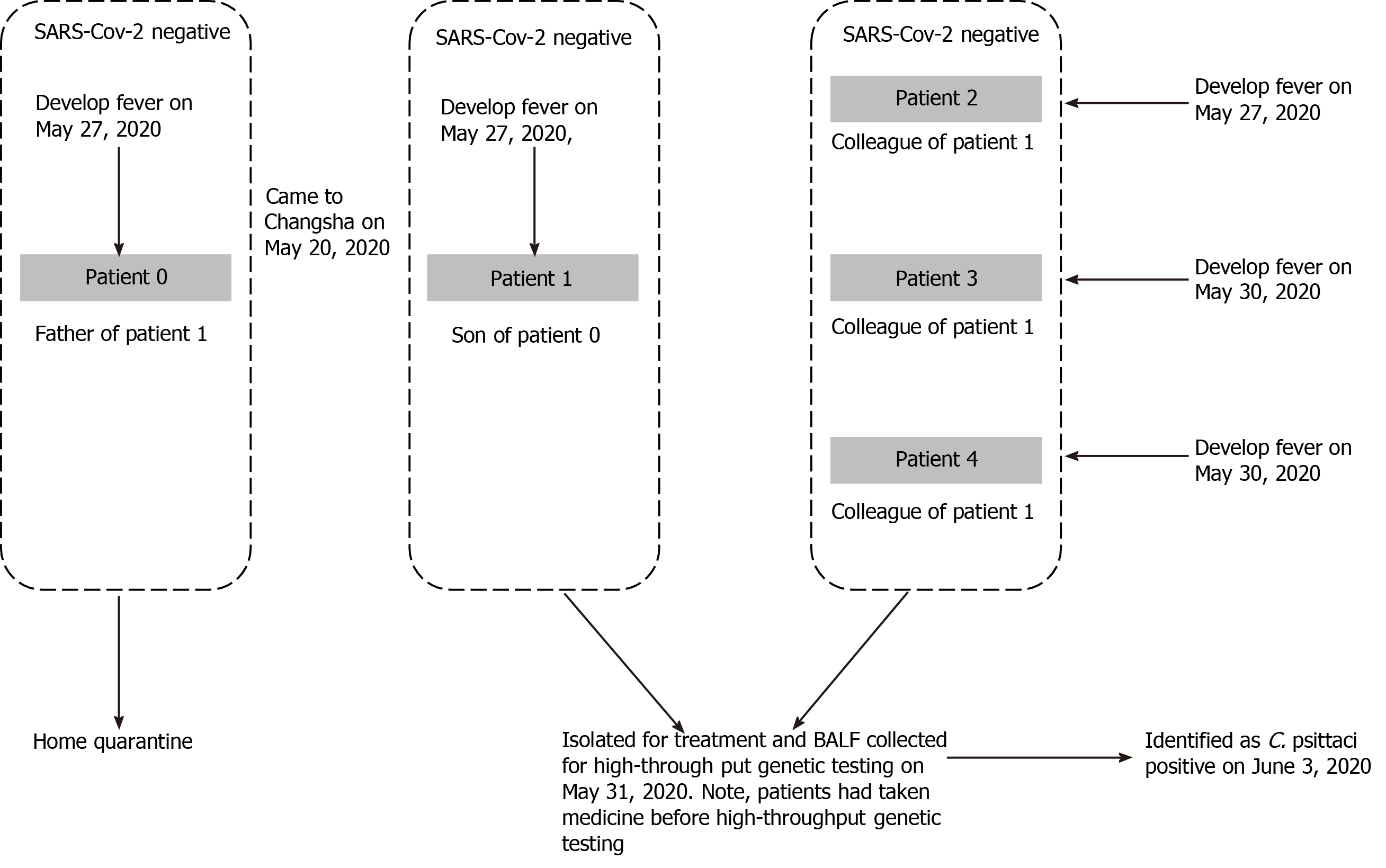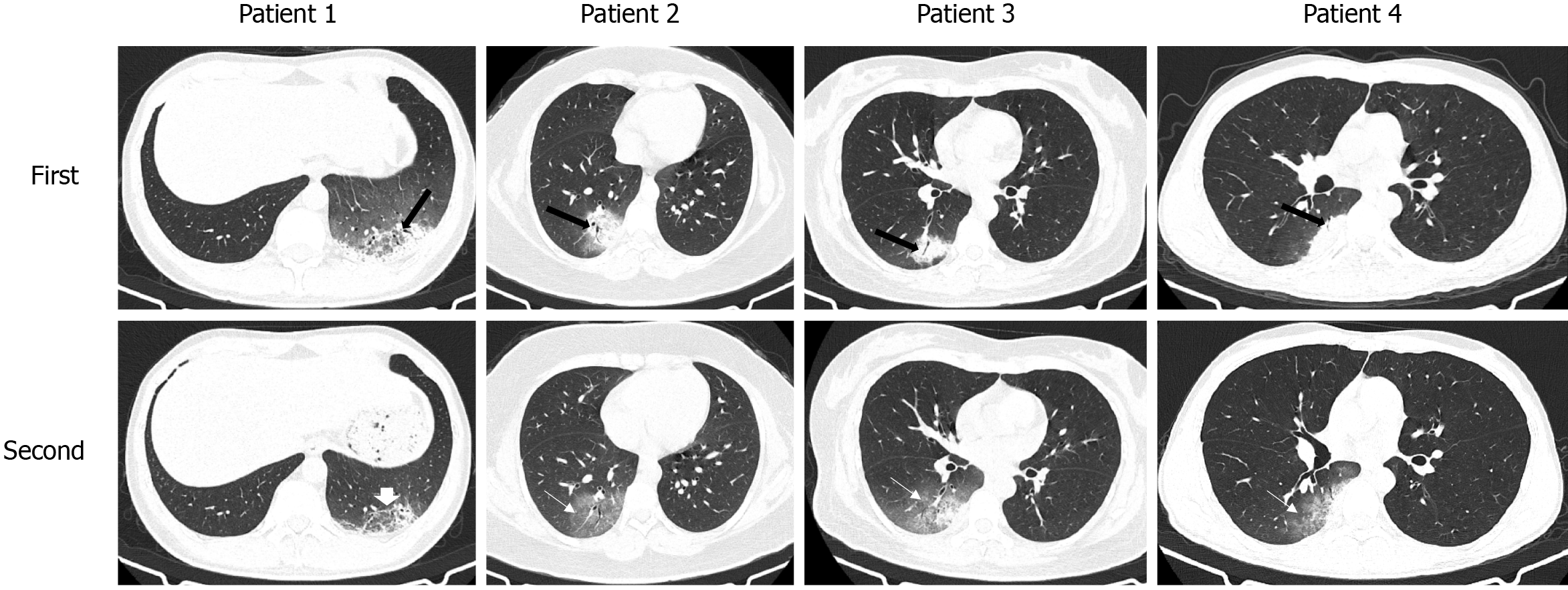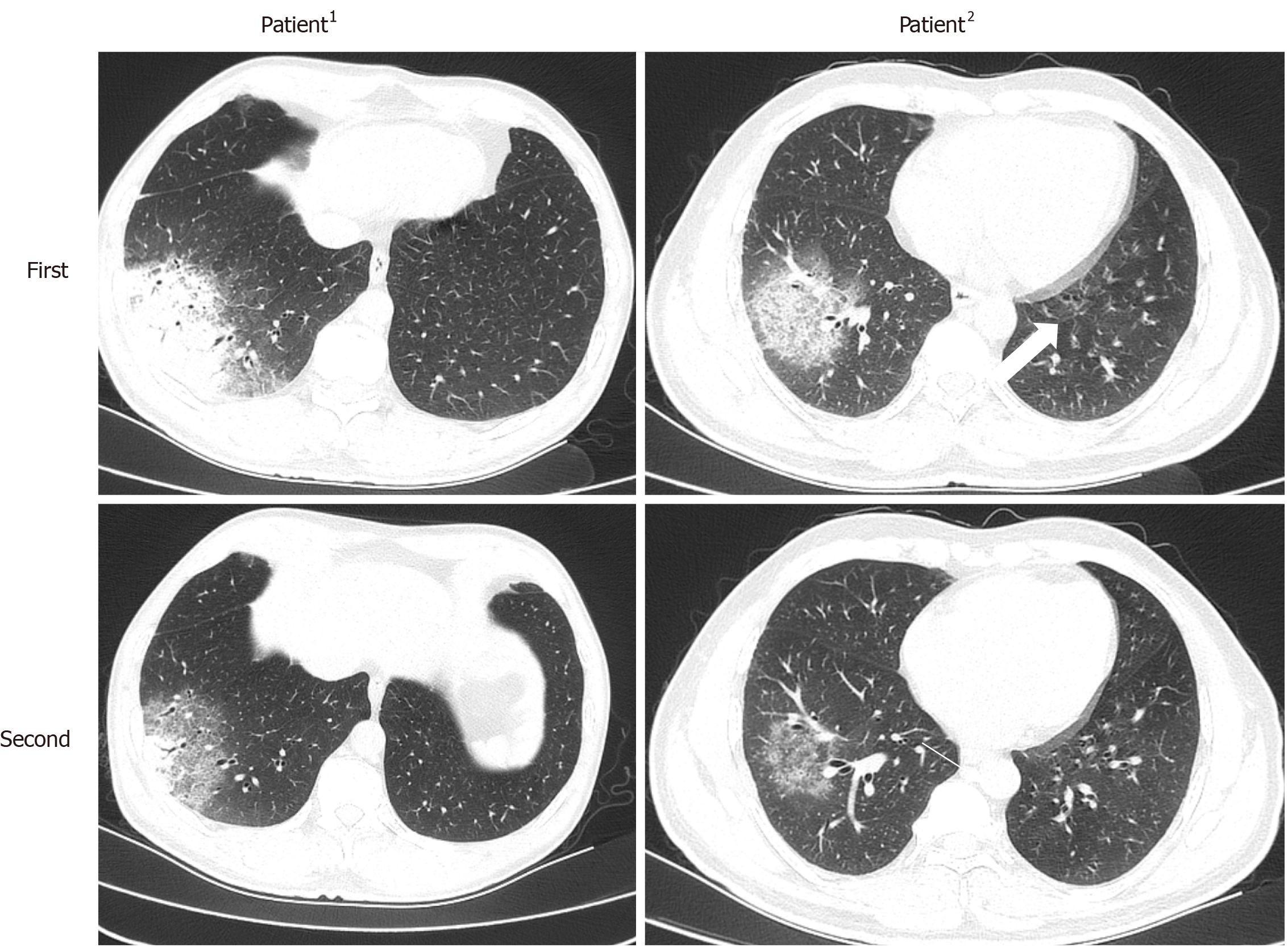Copyright
©The Author(s) 2021.
World J Clin Cases. Dec 26, 2021; 9(36): 11237-11247
Published online Dec 26, 2021. doi: 10.12998/wjcc.v9.i36.11237
Published online Dec 26, 2021. doi: 10.12998/wjcc.v9.i36.11237
Figure 1 The relationship and chronology of symptom onset of the 5 patients with psittacosis.
Figure 2 The imaging findings of 4 confirmed patients with psittacosis in cluster 1.
The predominant lesions type of 4 patients are consolidation or mixed ground-glass opacity (GGO) and consolidation (black thick arrow). Air bronchogram is presented in all patients. On follow-up computed tomography scans, the consolidations are absorbed and the area of GGO is extended in patients 2-4 (thin white arrow). The area of lesions is reduced in patient 1 (short white arrow).
Figure 3 The computed tomography image finding of patients1-2 in cluster 2.
The patients1-2 have similar imaging findings (mixed ground-glass opacity and consolidation) to patients 1-4 and the lesions are absorbed on follow-up computed tomography.
Figure 4 The computed tomography image finding of patient 0 and a case of coronavirus disease 2019.
The patient 0 have similar imaging findings (mixed ground-glass opacity and consolidation) to patients 1-4 (black thick arrow). The patients of coronavirus disease 2019 (COVID-19) presented multifocal and bilateral ground-glass opacity (white thin arrow) and vascular enlargement (white thick arrow). The margin of lesions in patients with COVID-19 is clearer. COVID-19: Coronavirus disease 2019.
- Citation: Zhao W, He L, Xie XZ, Liao X, Tong DJ, Wu SJ, Liu J. Clustering cases of Chlamydia psittaci pneumonia mimicking COVID-19 pneumonia. World J Clin Cases 2021; 9(36): 11237-11247
- URL: https://www.wjgnet.com/2307-8960/full/v9/i36/11237.htm
- DOI: https://dx.doi.org/10.12998/wjcc.v9.i36.11237












